This one sounds great but the average level is very low, mandating a very high playback level as stated.View attachment 159689
Richard Strauss Ein Heldenleben, Op. 40 Vier letzte Lieder Dorothea Röschmann (soprano) Rotterdam Philharmonic Orchestra/Yannick Nézet-Séguin (BIS-1880 SACD)
The sound is lush and transparent. The soundscape is wide, spacious and airy. (Play louder than usual)
The Gramophone says: "This new Rotterdam SACD has a similar sonic advantage offered by the Doelen Hall, with rich strings and spectacular sound in the famous “Battle” sequence. The Rotterdam Philharmonic also play very well indeed, but the snag here is the relatively low level of tension at the opening, which only bursts into visceral excitement when the “Battle” arrives. Nézet-Séguin’s portrait of the “Hero’s adversaries” is piquant rather than ironically adversarial, and the composer’s evocation of his delightful companion (his wife, Pauline) is portrayed as engagingly capricious with a delightful violin solo from Igor Gruppman, but without quite conveying the full sensuous passion which he felt for her. However, this depth of emotional feeling does at last arrive in the work’s glorious closing section, which is played with great eloquence and tenderness. Again, Gruppman’s contribution is touching and the closing brass chorale has a superb feeling of apotheosis. ... The whole cycle [Vier letzte Lieder] is gloriously, indeed radiantly sung here by the eloquent and beautiful Dorothea Röschmann, who has a truly lovely voice, and is most sensitively accompanied. I played it through four times before writing this notice and each time it brought tears to my eyes. Even among many illustrious names, there is no finer recorded performance. The disc is well worth having for that alone."
State-of-the-Art Recordings of Classical Works (SACDs)
- Thread starter Yuen A.
- Start date
You are using an out of date browser. It may not display this or other websites correctly.
You should upgrade or use an alternative browser.
You should upgrade or use an alternative browser.
I think this is a rare miss for Reference Recordings, at least for the organ symphony. There are far better recordings out there that sound more like the live performance I experienced earlier in 2025.View attachment 159364
Saint-Saëns Symphony No. 3 “Organ” Introduction and Rondo Capriccioso in A Minor for Violin and Orchestra, Op. 28
La Muse Et Le Poère for Violin, Cello, and Orchestra, Op. 132 Kansas City Symphony/Michael Stern (Reference Recordings RR-136 SACD)
These recordings are as good as it gets - very transparent, very detailed and very dynamic. The organ has a rich resonance.
Classics Today says: "The Kansas City Symphony under Michael Stern withstands comparison to any of the competition. My only quibble with the interpretation comes in the first movement, where Stern’s concern for precision of rhythm, otherwise admirable, seems to preclude that last bit of intensity at the tops of those crescendos that propel the principal theme onward into the second subject. Otherwise, this is an unusually vivacious and texturally transparent reading, recorded with welcome clarity in an acoustic that never permits detail to get obscured by excessive reverberation. The balance between organ and orchestra in the finale, even when everyone is blasting away, could not be more perfect. In the serene Adagio too, which flows with impressive poise, the soft tones of the organ add just the right touch of color to support the strings and solo woodwinds. In the scherzo, Stern keeps the rhythm taut, and he doesn’t drag out the quiet coda to the point where one’s patience begins to run thin. In the finale everyone really does pull out all of the stops, literally and figuratively, bringing the work to a thrilling conclusion."
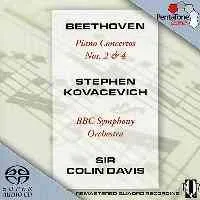
Beethoven Piano Concertos Nos.. 2 & 4 Stephen Kovacevich (piano) BBC Symphony Orchestra/Colin Davis (PentaTone 5186 101 SACD)
Wow, Stephen Kovacevich/BBC Symphony Orchestra/Colin Davis performances here are world-class! The piano's sound was resonant, airy, pure, and sparkling. Each note ringing with a full, rich tone. The BBC Symphony played passionately.
Music Web International says: "True, the catalogue groans under the weight of countless recordings of these pieces, yet only a handful have achieved legendary status. Among the latter, surely, must be the Stephen Kovacevich/Colin Davis series, made with the BBC Symphony and the LSO in the 1970s (Philips). Stephen Bishop, as he then was, gives bold, big-boned performances, with a sound to match, which may not appeal to those who prefer a lighter, HIPP-inspired touch. Still, that extraordinary cycle bowls me over every time I hear it."
I think this is a rare miss for Reference Recordings, at least for the organ symphony. There are far better recordings out there that sound more like the live performance I experienced earlier in 2025.
Hi, I would say that the sound quality of this particular "Organ Symphony" recording is among the best available and I am not alone with this view. The Music Web International says: "Recording engineer Keith O. Johnson excels with his excellent sonics which are crystal clear and well balanced with plenty of presence. This beautifully produced release is a pleasure to own." Classics Today says: "Audiophiles will want to hear this for the superb sonics, but the musical values are just as strong." Gramophone says: "This Kansas recording is another case in point. Even in a competitive market, this version has a distinct edge." Classical Candor says: "The resultant sound is resplendent and ideally captures the grandeur of Saint-Saens's music. The orchestra displays wonderful dimensionality. We hear it laid out before us in four dimensions: side to side and front to back, with air around the instruments. There is also a great dynamic spread with plenty of punch (meaning it sounds like a real orchestra should sound), a modest distancing, good midrange transparency, and a mild hall resonance to set it all off in a most-natural manner. Most important for the symphony, the organ sounds deep, rich, solid, and clean. As usual with Reference Recordings, this is splendidly lifelike sound, with no artificial enhancement, close-up miking, or editing-console gimmicky."
This recording of the organ symphony sounds like one is seated at the back of the concert hall. There are much better options available, in my opinion. To each their own. I don’t put much stock in what a music reviewer says, they miss as often as they hit.Hi, I would say that the sound quality of this particular "Organ Symphony" recording is among the best available and I am not alone with this view. The Music Web International says: "Recording engineer Keith O. Johnson excels with his excellent sonics which are crystal clear and well balanced with plenty of presence. This beautifully produced release is a pleasure to own." Classics Today says: "Audiophiles will want to hear this for the superb sonics, but the musical values are just as strong." Gramophone says: "This Kansas recording is another case in point. Even in a competitive market, this version has a distinct edge." Classical Candor says: "The resultant sound is resplendent and ideally captures the grandeur of Saint-Saens's music. The orchestra displays wonderful dimensionality. We hear it laid out before us in four dimensions: side to side and front to back, with air around the instruments. There is also a great dynamic spread with plenty of punch (meaning it sounds like a real orchestra should sound), a modest distancing, good midrange transparency, and a mild hall resonance to set it all off in a most-natural manner. Most important for the symphony, the organ sounds deep, rich, solid, and clean. As usual with Reference Recordings, this is splendidly lifelike sound, with no artificial enhancement, close-up miking, or editing-console gimmicky."
I attend live symphony orchestra concerts several times a year and sit about 15 rows back. This is my reference for recordings.

Tchaikovsky Symphony No. 5 in E Minor Op. 64 The Voyevoda – Symphonic Ballade, Op. 78 Capriccio italien, Op. 45 Gothenberg Symphony Orchestra/Neeme Järvi (BIS-SACD-1408)
These recordings are lifelike and nuanced in tone. Timbres are spot-on. All the sounds/notes are audible and present.
Classics Today says "After a couple of relatively unimpressive releases in what should have been a fine Tchaikovsky cycle, Neeme Järvi and the Gothenburgers hit their stride and turn in a generally excellent Fifth Symphony. The first-movement exposition takes a few minutes to settle down, largely due to Järvi’s somewhat casual approach to rhythm, but once the music gets going it’s smooth sailing, with lively tempos and really beautiful sonics (in both stereo and SACD multichannel formats) that make listening a genuine pleasure. The andante features some attractive solo work from principal horn and clarinet, and rises to an impressively passionate climax–but it’s the elegant third movement and the finale that impress the most. The latter in particular has tremendous drive and excitement–and a cogency in its repetitious central development episode–that many performances lack."

Anton Bruckner Symphony No.4 in E flat major, Romantic (1888 version) Minnesota Orchestra/Osmo Vänskä (BIS-SACD-1746)
Wow, this recording of the Bruckner No. 4 is as good as it gets! The first thing I noticed straight away was how well the recording is able to captured the wonderful acoustic of the Orchestra Hall in Minneapolis, Minnesota. The soundscape is massive, totally transparent and resonant. The strings shimmer, the woodwinds airy and enchanting and the brass, blazing. Every instrument here sounded lifelike.
Music Web International says: "In my view, Vänskä’s sense of shape and direction in this recording is pretty much spot-on. I would like to say unsurpassed, but that would assume intimate knowledge of every other recording around and I can’t make that claim. .. The sense of space and lyrical expression through the movement is both unpretentious and poetic – the kind of alchemy which I know will see me returning to this recording more often in attempts to divine the secret. I have no trouble with the final two movements, the ones supposedly messed around with the most in this version of the score. The Scherzo is playful and dramatic, the punch of the brass and sheer dynamics of the recording making for an impressive ride. Bruckner’s trickily fragmented writing is skilfully dealt with here, with the warmth of the Minnesota strings creating instantaneous moments of deep expression. The Finale is a masterpiece of atmosphere and drama, the opening providing one of those rare thrills which can either go into wallowing melodrama or, as here, tightly expressed and forceful musical argument building to that heady reprise of the opening theme of the symphony at 2:20. Once again, Vänskä observes Bruckner’s variations in tempi and ritardandi, holding everything in proportion and maintaining a sense of flow and scale both human and grandly architectural."
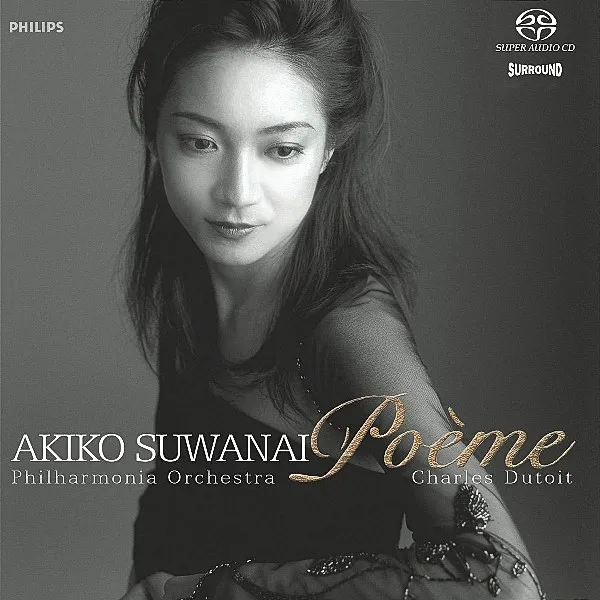
Akiko Suwanai (violin) Philharmonia Orchestra/Charles Dutoit – Poème Camille Saint-Saëns: Introduction et Rondo Capriccioso, Op.28;
Havanaise, Op.83 Edouard Lalo: Guitare, Op.28 Ernest Chausson: Poème, Op.25 Fritz Kreisler: Sicilienne e Rigaudon (in the style of François Francoeur); La Précieuse (in the style of Louis Couperin) Hector Berlioz: Rêverie et Caprice, Op.8 Maurice Ravel: Tzigane (Philips – 475 6189 SACD) (An original 5.1 DSD recording)
Suwanai plays her violin beautifully that allows her Strad to really sing! The recording of the violin is top notch, very nuanced, lifelike, with a sense of air/space around it.
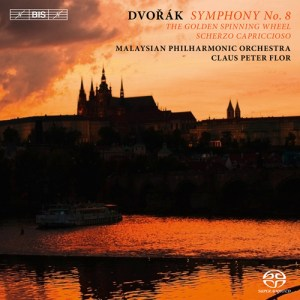
Antonín DVOŘÁK Symphony No. 8 in G major, Op. 88 The Golden Spinning Wheel, Op. 109 Scherzo Capriccioso, Op. 66 Malaysian Philharmonic Orchestra/Claus Peter Flor (BIS-SACD-1976)
This is a very powerful and dramatic performance of the Symphony No. 8. The recording is state-of-the-art. Very lifelike, transparent, dynamic and detailed.
Music Web International rightly says: "Flor benefits too from the excellent recorded sound, captured with utmost subtlety in the state-of-the-art Petronas Hall at Kuala Lumpur. The orchestral playing is absolutely first class, of a standard to match famous ensembles from Europe or America."
Gramophone says: "The Eighth is similarly reminiscent of Kubelík, the first movement energetic but with plenty of ‘give’ at key climaxes, the Adagio warmly emotive (with some very sonorous string-playing), the Allegretto relatively swift but with marked portamentos in the Trio section, while the finale is rhythmically pointed and, towards the end, touched with a rare brand of poetry. The reflective winding-down before the fast final onslaught reminded me as much of Bruno Walter as it did of Kubelík."
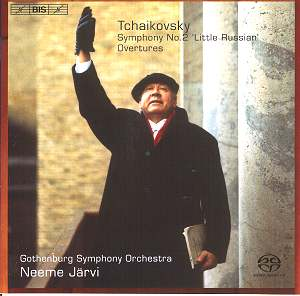
Pyotr Ilyich TCHAIKOVSKY Symphony no. 2 in C minor, op. 17 “Little Russian” (1879 version) Overture in F major (1866 version) Festive Overture on the Danish National Anthem in D major, op. 15 (1892 version) The Storm (Groza), Overture, op. 76 Gothenburg Symphony Orchestra/Neeme Järvi (BIS SACD-1418)
These recordings are as good as it gets. The soundscape is completely transparent, massive, ambient and three-dimensional. Dynamics, percussion and bass-lines are awesome. Brass instruments sounded powerful and lifelike. In fact, all musical instruments here sounded realistic.
The Gramophone says: "The Gothenburg Symphony Orchestra, under their longtime music director Neeme Järvi, give an outstanding performance of the Little Russian Symphony, beautifully played and paced and immaculately recorded."
BBC Music Magazine says: "If anyone could spin gold out of the gangly lyricism of the Second Symphony’s original first movement, it would be that veteran of creative conducting Neeme Järvi. What we have here, though, is the standard 1879 reworking, which is hardly a cause for regret. After Gothenburg soloists have been given expressive space in Tchaikovsky’s introductory variations on a Ukrainian folk song, the taut revision springs to pristine life in all its Beethovenian energy. ... Keenly-articulated Gothenburg playing sounds to me rather garishly lit by the familiar concert-hall team, but you certainly get the natural acoustics of the orchestra’s home in the SACD format."
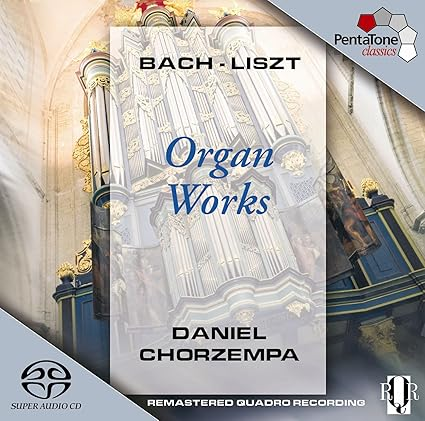
Bach - Toccata and Fugue in D Minor, BWV 565; Passacaglia in C Minor, BWV 582; Prelude and Fugue in D, BWV 532; Prelude and Fugue in A Minor, BWV 543; Liszt - Variations on Bach’s Cantata "Weinen, Klagen, Sorgen, Zagen" Daniel Chorzempa, organ (PentaTone 5186 127 SACD)
The organ sounded real, rich, resonant and massive. Rad Bennett of Soundstage says: "This approach generates a bigger-than-life, ultra-dramatic version of the famous D minor Toccata. The 4.0 recording nails down a lot of reverberation in the rear channels, yet the uncanny engineering job allows all of the space of a very large church to be heard without muddying what’s going on up front. It is hard to believe that this recording was originally released over 30 years ago."
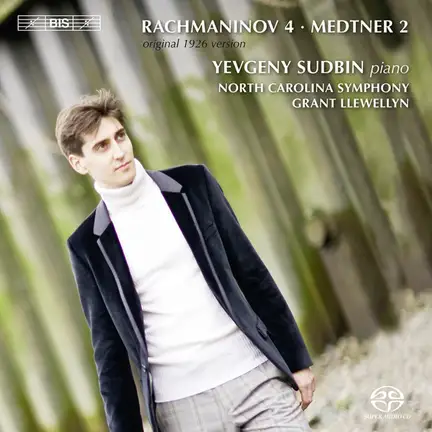
Rachmaninov & Medtner Piano Concertos Yevgeny Sudbin (piano) North Carolina Symphony Orchestra/Grant Llewellyn (BIS SACD 1728)
These recordings are very transparent and dynamic. Sudbin's phrasing and voicing are excellent.
BBC Music Magazine says "The remarkable Yevgeny Sudbin, in a passionately-argued liner note, thinks Rachmaninov ‘should have stuck to his guns… [the original version is] superior, in terms of both form and emotional impact… a truly epic work and, as an added “bonus”, much more insanely difficult’ than the truncated later version. If his exhilarating, barnstorming, spine-tingling performance still doesn’t quite convince (the truth is, both versions have their problems), he manages to show it is a very different, altogether wilder conception than the tidied-up 1941 revision, whose drastic cuts deprived us of some striking music. Sudbin also stresses the work’s connection to and even dialogue with Rachmaninov’s great friend Medtner, whose Second Concerto, given this particular coupling, here emerges as the stronger work. Despite rival versions by Demidenko, Hamish Milne and Berezovsky, Sudbin also sets his individual stamp on this rhythmically vital and superbly constructed score. BIS’s recording is absolutely outstanding. The North Carolina Symphony play as if possessed, but seem – perhaps it’s the balance – to field a smaller body of strings than one’s used to in this repertoire. The result is that Medtner’s brilliant and often witty wind writing comes much more into the picture, raising the work even further in one’s estimation."

Edvard GRIEG Peer Gynt Suite No. 1, Op. 46 Peer Gynt Suite No. 2, Op. 55 Funeral March in Memory of Rikard Nordraak Old Norwegian Melody with Variations, Op. 51 Bell Ringing, Op. 54 No. 6 Bergen Philharmonic/Ole Kristian Ruud (BIS-SACD-1591) A Relisten
These recordings came alive, via my current sound system and are as good as it gets (many thanks to the reference-level components used, including top-notch Ansuz Acoustics resonance control components and the Ansuz Acoustics D-TC Supreme analog interconnects [A$51,000]). The soundscape is huge, wide and deep. Fortissimos/dynamics are awesome (e.g. track 4 - In the Hall of the Mountain King). Timbres are spot-on.
Classics Today says: "There have been many, many excellent recordings of Grieg’s Peer Gynt Suites, and I personally prefer collections that offer a somewhat larger selection of incidental music, minus the voices (save perhaps for Solveig’s two numbers). Still, if you want just the two canonical suites, you can’t go wrong with this excellent release. Ole Kristian Ruud knows the music about as well as anyone alive, and it goes without saying that the orchestra does too. There are some wonderful things here, including an effortless, surging “Morning Mood” and one of the best accelerandos on disc during “In the Hall of the Mountain King”... As in all of the most recent SACDs from this source, BIS’s engineering produces eminently natural, sumptuous results in all formats. Is this “the best”? Given the volume of available competition it’s impossible to say, but in most respects you’ll find these interpretations to be as fine as anything out there, and if you’ve been collecting this series there’s no conceivable reason to hesitate."
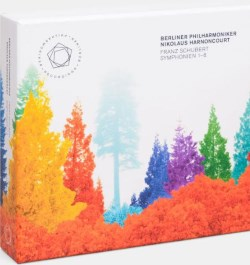
Franz SCHUBERT Symphonies Nos 1-8 (Neue Schubert-Ausgabe numbering system) Berliner Philharmoniker/Nikolaus Harnoncourt
(BERLINER PHILHARMONIKER RECORDINGS BPHR 150063 SACD)
The sound is surprisingly present, detailed and lifelike. Front-row seats perspective. Play very loud.
Music Web International says: "Throughout the set Harnoncourt directs magnificent playing from the Berliner Philharmoniker and displays an impressive sensitivity to the detail in the scores that allows the listener to appreciate nuance and tone colour together with a natural flow of unforced forward momentum. Praiseworthy is the degree of rhythmic metrical and dynamic detail he uncovers which is not always evident in other readings. Without overemphasising individual instruments Harnoncourt reveals plenty of detail and surprising points. I find these to be incisive performances that seem to extend the deeply imbedded bitter-sweet quality sensibly without being excessive. In the symphonies, the stream of lyricism is paramount with Harnoncourt’s interpretations so often infused with Schubert’s innate Viennese character. The tempi changes can seem quicksilver with rhythms and accents crisply and cleanly articulated. Harnoncourt’s speeds can vary from the exceedingly brisk but never breathless to unhurried yet certainly never feeling laboured. Overall, I find these perceptively conceived accounts from Harnoncourt enable me to experience Schubert’s writing from a new perspective. .... On hybrid SACDs, there are no problems whatsoever with the sonics of these live performances from the Philharmonie, Berlin, satisfyingly recorded, vividly clear with plenty of presence."
Last edited:

Beethoven Piano Concertos No. 1&2
Mari Kodama
Deutsches Symphonie Orchester Berlin
Kent Nagano
The world´s first purely digital Recording” is on the cover of this Sacd.
The analog to digital converters seem to be directly behind the microphone capsules and from there it continues digitally.
The recording sounds really good, also not impressive. But I've heard "conventional" discs that are just as good.
Musically, however, it is a wonderful recording. Subtly makes music with always flowing melodies.

Ludwig van BEETHOVEN Piano Concerto No. 1 in C major, Op.15 Piano Concerto No. 3 in C minor, Op.37 Ronald Brautigam (piano)
Norrköping Symphony Orchestra/Andrew Parrott (BIS SACD 1692)
These are wonderful recordings - lifelike, transparent, nuanced and immediate. There is plenty of space/air around the Steinway D.
Music Web International says: "Brautigam, needless to say, plays very much in the style we’ve become accustomed to, with superb dexterity, plenty of attack on fortissimos, real rhythmic urgency and a wide dynamic range. I’m not sure whether the modern piano has been voiced on the bright side, as Andras Schiff does these days, but it sounds splendidly alive and vivid, with none of the mushiness or ‘woolly’ quality that can afflict classical concertos on a modern grand. It also helps that Brautigam uses the sustaining pedal judiciously which, coupled with the same HIP approach from his conductor, gives these performances an edge over many rivals. Indeed, Parrott does what we now expect from a number of conductors (Mackerras, Rattle, Norrington) in getting the Norrköping players to use very little vibrato, shorten the phrase lengths and play with a general liveliness that is very invigorating; wind lines are crystal clear, brass rings out thrillingly when required, and timpani use sticks to great effect. Tempos are on the fast side but never overdone, except possibly in the finale to No.1, where even Brautigam’s technique is pushed to the limit, leading me to ponder once again whether the lighter fortepiano action would have made it sound more convincing. Overall, the interpretations are very satisfying, the Mozartian heritage strongly brought out without diminishing the grandeur of these works."
 ,
, J.S. BACH St. Matthew Passion Excerpts Nancy Argenta, soprano Robin Blaze, counter-tenor Makoto Sakurada, tenor Gerd Türk, bass
Peter Kooij, bass Chiyuki Urano, bass Bach Collegium Japan/Masaaki Suzuki (BIS-SACD-1500)
The voices/instruments are stunningly present and realistic. The soundscape is immense, spacious, extremely wide, reverberant and immersive.
Music Web International says: "This is a splendid performance of St Matthew’s Passion. It is not necessarily better than favoured versions such as those by Gardiner or Herreweghe but it is different in a very positive and moving way. The overall performance, combined with different presentation options, make it a serious contender for first choice."
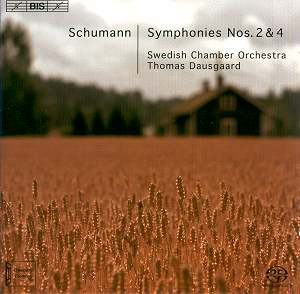
Robert SCHUMANN Symphony No.2 in C major Op.61 Overture to ‘Scenes from Goethe’s Faust’ Julius Caesar, Overture Op.128 Symphony No.4 in D minor Op.120 (original version, 1841) Swedish Chamber Orchestra/Thomas Dausgaard (BIS SACD-1519)
The recordings are realistic, pure, transparent and reverberant. Bass-lines and dynamics are lifelike. The Sunday Times says: "the playing throughout is first-rate, with often dazzling, thrilling faster movements, but also some beautifully shaped, tender slower music, and a real feeling for the emotional extremes that are at the heart of Schumann’s art." The Gramophone says: "BIS's realistic sound quality helps the clarifying process and the timps (with hard sticks) have tremendous presence. A good idea, too, to include Schumann's Julius Caesar and Faust overtures: strange, relatively late essays, equivocal music, slightly unhinged and played – appropriately enough – with a restless, slightly nervous edge."

Ludwig van BEETHOVEN Symphony No. 5 in C minor, Op. 67 Symphony No. 7 in A Major, Op. 92 Wiener Philharmoniker/Carlos Kleiber
(2.0 PCM 24-bit/96Khz) (DEUTSCHE GRAMMOPHON 471 630-2 SACD) A Relisten
This recording of the Symphony no. 5 has never sounded this good until now (many thanks to my upgraded DAC). It sounded lifelike with realistic dynamics, presence, tone color and soundscape.
Music Web International says: "for in each case the music-making has the electricity and urgency that one associates with the best live performances. The members of the Wiener Philharmoniker must have played both scores more often than they can remember yet, galvanised by Kleiber, each symphony comes up here sounding not just fresh but radical. The Allegro con brio of the Fifth is intensely dramatic. The pacing is brisk but not over-driven and such is the urgency of the playing and of Kleiber’s conception that the movement, including the exposition repeat, seems to be over in a flash. The Andante con moto is taken at a nice, moderate pace and often sounds relaxed, even genial, as it should, yet even so one is conscious that creative tension is being maintained. The ‘spooky’ third movement is marvellously etched in: highlights include the horn fanfares, first heard around 0:30, which sound wonderfully arresting in both CD and BD-A formats, and the fugal passage, led off most athletically by the cellos and basses. The transition to the finale is expertly managed, the tension palpable, and once the movement itself is launched the reading is superb, the pacing steady and the mood confident and jubilant. In this finale I particularly admired the wide range of dynamics that Kleiber gets from the orchestra but, in truth, dynamic contrasts have been a feature of the entire reading. The performance achieves a conclusion that one can only describe as exalted."

Ludwig van BEETHOVEN Symphony No. 2 in D major, Op.36 Symphony No. 7 in A major, Op.92 Minnesota Orchestra/Osmo Vänskä (BIS- SACD-1816)
The recordings are transparent and lifelike. The soundscape is wide and spacious. Music Web International says: "Potential purchasers can of course relish the sumptuous SACD sound, and this may indeed be a good enough reason to prefer this set over some others. Glorious sonics are no substitute for excellent performance however, and Osmo Vänskä has made of his Minnesota Orchestra a genuinely crack team of musicians. There is indeed a breadth and depth to the sound which is the equal of and better than most, but the ensemble and sonority in the strings is also a real plus. The sense of chamber-music making is strong in the lighter movements, such as the shorter scherzo Allegro third movement of the Symphony No.2. Vänskä works the contrasts of the music to their reasonable limits, and the dynamics go a long way to making these performances a revival of why we find these pieces so inspiring in the first place. There is a freshness of spirit at work here which makes these symphonies sound new – not ‘modern’ in the sense of any kind of avant-garde wilfulness, just an openness, that combination of lyricism, energy and drama which keeps bringing us back for more. ... His orchestra is well up to the multiple climaxes in the complicated first movement of the Symphony No.7, and the gorgeous Orchestra Hall acoustic also helps carry this kind of performance: showing the drama inherent in the score, rather than treating the music as an opportunity to promote orchestral virtuosity. There is however a forward momentum in the music which is unstoppable, and an accuracy in the articulation and observance of dynamics which is almost forensic. This keenness to follow Beethoven’s instructions results in warmth and care in performance, but also allows the musicians to let rip where the score allows – the horns peals forth with tremendous penetration in their calls during the final Allegro con brio of this symphony. The essential second movement Allegretto is as it should be: one of the great emotional centres of the piece, but light in texture – unencumbered by externally imposed funereal associations."
Similar threads
- Replies
- 13
- Views
- 3K
- Replies
- 1
- Views
- 2K
- Replies
- 238
- Views
- 57K
- Replies
- 8
- Views
- 4K
- Replies
- 23
- Views
- 13K
| Steve Williams Site Founder | Site Owner | Administrator | Ron Resnick Site Owner | Administrator | Julian (The Fixer) Website Build | Marketing Managersing |










